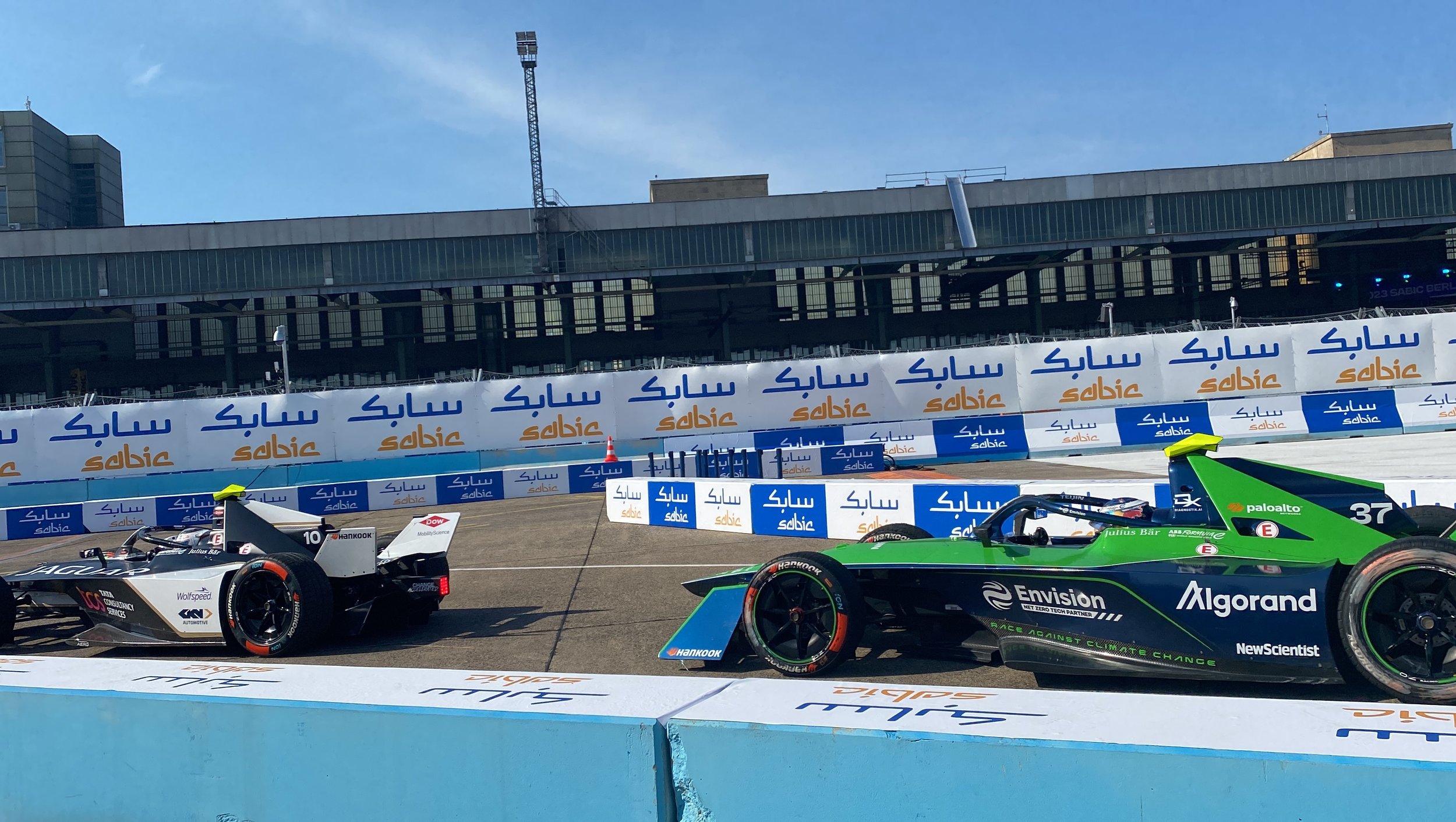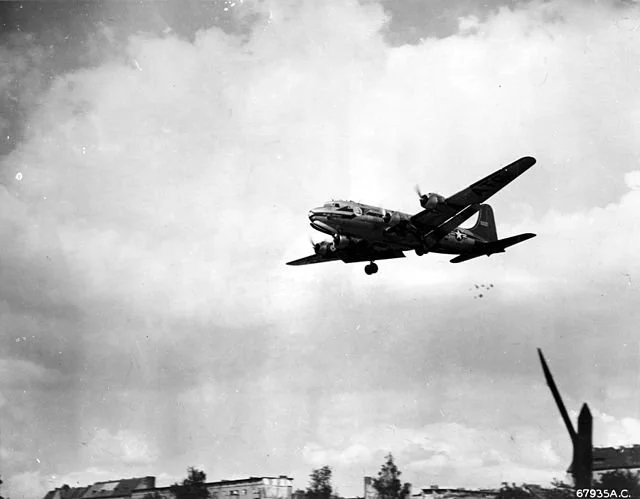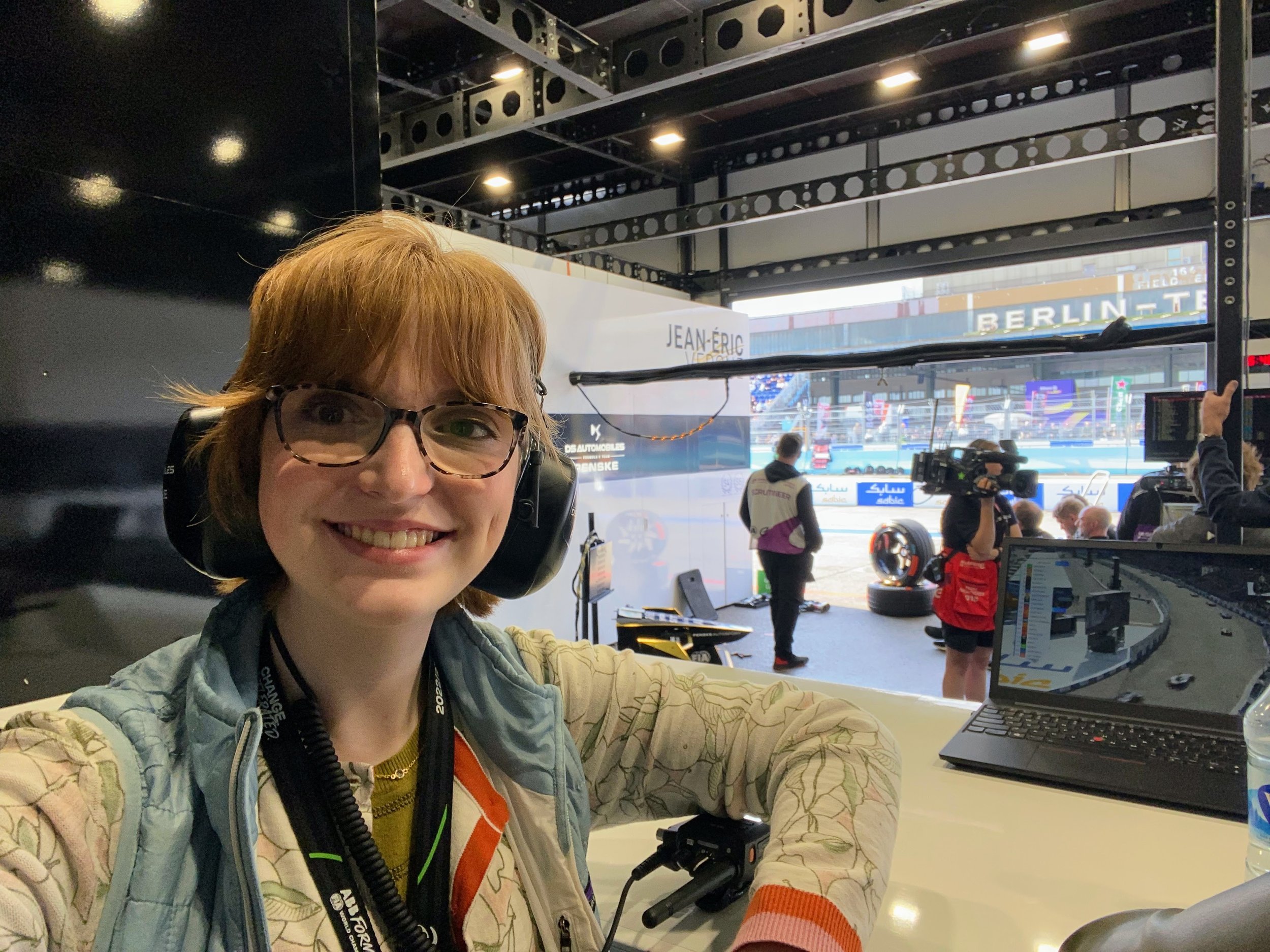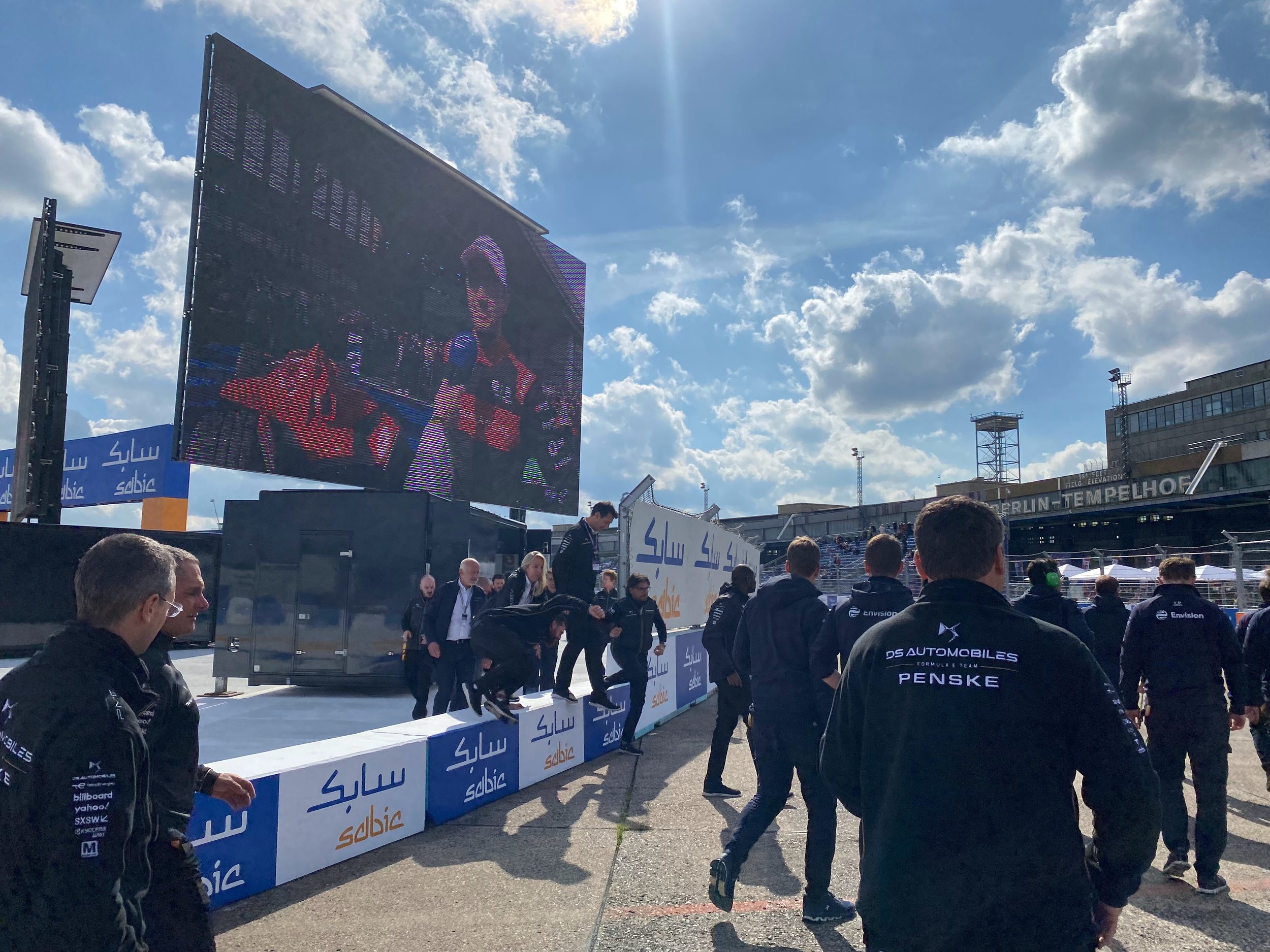Berlin Bulletin I: Berlin off the Beaten Track
Up close and personal with the action at Tempelhof Formula E. All images belong to Author, unless otherwise stated.
From the Brandenburg Gate, Checkpoint Charlie or the TV Tower, to techno, döners and the Ampelmann… Everyone has their own associations with Berlin. Although these are all well-known for good reason, CLC columnist Sophie Clare wants to take you away from tourism and explore some out-of-the-ordinary Berlin experiences. Starting with attending a Formula E race weekend in Berlin’s historic Tempelhof Airport, the Berlin Bulletin will also see Sophie exploring her relationship with Berlin’s different neighbourhoods and considering the culinary diversity of the city with a guide to some of Berlin’s food markets, restaurants and street food.
I arrived in Berlin at the start of April, excited to immerse myself in a new environment which I had only visited for a few short days before moving here. Particularly keen to explore the rich cultural and historical opportunities on offer, I thought this column would be an exciting chance to focus on experiences which might be unexpected for those familiar with the city.
You may have seen the Tik-Toks and Instagram reels of slick, black leather clad partygoers sharing the renowned nightlife and techno clubs (that is, if their phone cameras haven’t been taped over) – or if you took German in school, you may remember studying modules on the city and its history, observing its landmarks through films like Good Bye, Lenin! One of my first few weekends in Berlin, however, was highlighted by a far different noise than the techno club beats… the whine and thrum of electric race car engines.
Electric single-seater racing series Formula E has had a race weekend in Berlin every year since its conception, as a sport with a purpose to raise climate awareness and promote electric mobility. In my role as President of the Cambridge University Motorsport Fans Society, I was able to attend this year’s Berlin E-Prix with media accreditation and gain an insight into an event which brings thousands of fans to the Tempelhof airport year on year.
Blue skies over the Tempelhof Airport and Formula E Pit Lane.
Like much of Berlin’s architecture and urban landscape, the Tempelhof Airport has its own tumultuous history. The airport is on the site of land belonging to Knights Templar, from which the name Tempelhof developed. Later the site was a parade ground for the Prussian army from 1720 to the outset of the first World War. Following flight demonstrations by aviators like Armand Zipfel and Orville Wright in 1909, Tempelhof was first officially designated as an airport in 1923 and its old terminal became the world’s first to have an underground railway. That station is now Paradestraße, through which I arrived for each day of the Formula E race weekend.
The Formula E podium – inside the historic Tempelhof hangar.
While the Nazis were in power, a new terminal was built which was intended as a symbol of Hitler’s planned “world capital” Germania — the current form of the airport was built between 1936 and 1941. During the Cold War, Tempelhof played perhaps its most well-known role in recent history, as the lifeline for Berliners during the Allied Berlin airlift of 1948/49. The airlift provided vital deliveries of food, fuel and essential goods to the capital following a blockade by Soviet authorities of land and water traffic in and out of the western-controlled sectors of Berlin. The efforts of pilots taking part in the airlift to drop sweets by parachute for children from the area also sprouted an iconic image in Berlin’s history, of the so-called “Rosinenbomber”.
A U.S. Air Force Douglas C-54 Skymaster making a candy drop (note the parachutes below the tail of the C-54) on approach to landing in Berlin. (Photo: USAF, Public Domain, via Wikimedia Commons)
After a long legacy of military and civil aviation, air traffic at Tempelhof was closed in 2008 and the outfields opened as a park: the largest public green space in Berlin and a location for many sports, music and business events. Since the inaugural Formula E season, Berlin has hosted the most races out of any city over a range of circuit configurations. This year’s two races were held, with this ‘double header’ marking the sport’s 17th and 18th outings in Berlin. Racing here provides unique challenges, in particular the track surface made of concrete slabs designed for planes rather than race cars. The track is also slightly wider than most Formula E street circuits, which means there are plenty of opportunities for exciting wheel-to-wheel racing and overtaking.
Personally, one of the things which I most admire about Formula E — alongside its incredible racing and entertainment with a sustainable purpose —- is its accessibility for newcomers to motorsport. Since its conception the series has reduced traditional barriers to live circuit motorsport, by having affordable ticket prices and easy access to its race locations by virtue of city-circuits well connected to public transport. A range of fan engagement initiatives customised to each race location mean that the sport is an excellent point of entry, not just for those entirely new to motorsport. For many longtime fans it provides the perfect opportunity to move from watching on TV to attending a race weekend.
A glimpse from the inside of the Tempelhof hangar buildings.
Like all Formula E races, the Allianz Fan Zone provides the opportunity for attendees to relax, enjoy food and drink, and engage with a wealth of activities during the race day. There are musical performances, stunt bikes, food stalls and more. Exhibits from sponsors like CUPRA, SABIC and DHL were showcasing new sustainable technologies and fans can also try out racing simulators and enter competitions. The Berliners on Track event even provided locals the opportunity to take a lap of the circuit on electric skateboards, scooters and bikes to showcase examples of sustainable mobility.
Some other initiatives beyond the close-fought racing action included celebrations for Earth Day 2023. Drivers helped to plant raised flower beds which decorated the race site before being donated to AWO/IB, a local charity supporting refugees from countries including Ukraine, Syria and Turkey.
To understand more about the fan appeal of the Berlin E-Prix, I asked some of the friends I made during the race weekend. That itself is perhaps testament to the wonderful fan community, where it is so easy to get talking with like minded people and end the day with new friendships.
I spent time with Lena Ferle in the media centre, she is Head Of Social Media Content for the publication Formula Nerds and we watched the second race together from the unique vantage point of the DS PENSKE garage. She described how the atmosphere at the E-Prix was incredible, saying “everyone I spoke to was happy to see racing cars at Tempelhof Airport and to enjoy activities with friends in the fan village: even the rain on Sunday could hardly dampen the mood.” She was particularly impressed by the drivers‘ interaction with fans, and the level of detail and energy put into the pitlane walk and trackside autograph sessions. The race on Saturday with over 190 overtakes “will probably remain in the memory of Formula E racing history forever,” which rounded off an excellent weekend. “I’m really looking forward to returning next year”, Lena concluded, highlighting the accessibility of the event for newcomers to motorsport: “I think even if you’re not already a fan of Formula E, a trip to the E-Prix in Berlin is worth every penny!”
Leonie Henze also shared her thoughts on the race weekend, remarking on its efficient organisation and jam-packed schedule of fan events which keep the days busy even at times when the cars are not on track. She discussed parts of the fan experience which she particularly enjoys, in particular “the opportunity to visit the pit lane and to get a closer look at what is going on there.” The more relaxed atmosphere is also something which she appreciates, sharing that “I would always choose Berlin if I could only visit one race weekend, simply because of the special and unique location… racing around Tempelhof, which is also a historic monument, is something you can't experience anywhere else.”
I undoubtedly agree that the Berlin E-Prix offers an experience unlike any other you might expect from the city. Whether you’re in the Fan Village, the grandstands or have the opportunity to see behind the scenes like I did, there is truly something for everyone. Attending a fast–paced motorsport event might not be your first expectation in a city as jam-packed with possibilities as Berlin. However, my race weekend experience will certainly be one of the highlights of my time here.
Over several years of racing here, Formula E has nailed down its unique blend of dramatic racing, technological innovation and interaction with the local culture. From photo opportunities in quintessentially Berlin Fotoautomaten (photo booths) in the Fan Village, to engaging with the history of the Tempelhof airport and the city at large, the Berlin E-Prix offers an experience which longtime motorsport fans and rookies alike can enjoy. If you happen to visit the city during a future Formula E race weekend, it is more than worth a visit.







